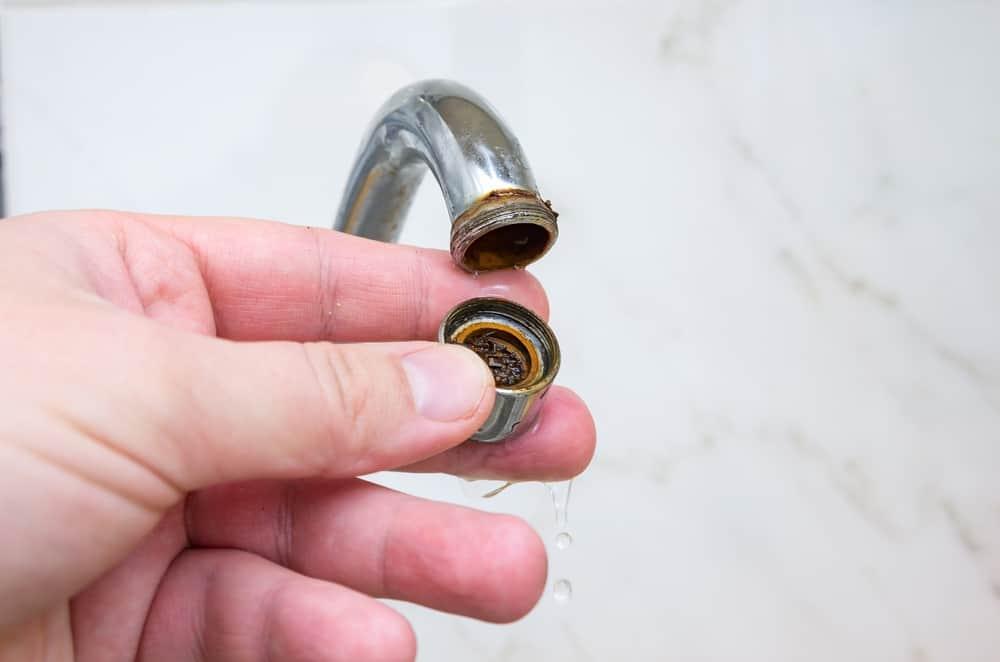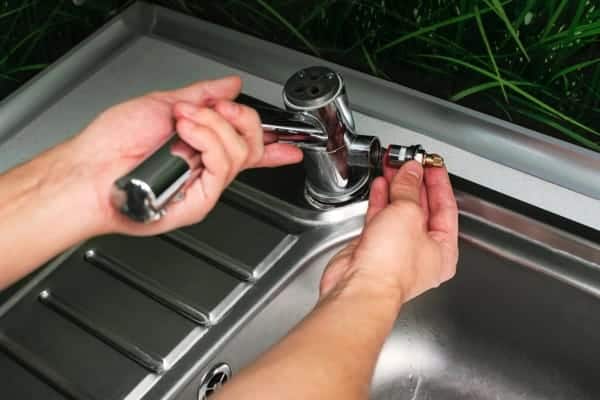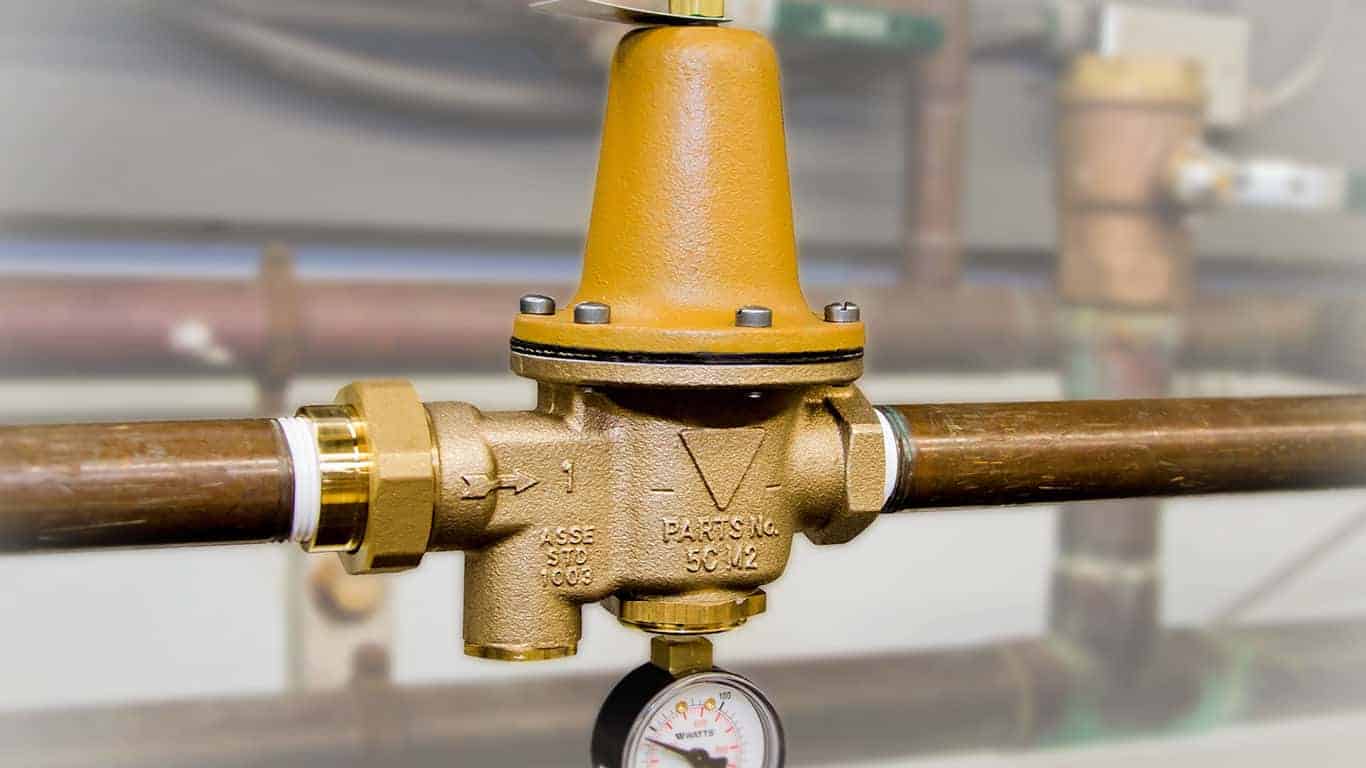So, you’ve noticed that the water flow from the kitchen sink faucet comes at extraordinarily low pressure. If this is your first time dealing with something like that, it can be a bit overwhelming to figure out what the source of the problem is.
And, indeed, there are numerous possible causes of this issue. So, low water pressure in kitchen sink – here are the 7 main problems and their solutions.
You are watching: Low Water Pressure in Kitchen Faucet (Causes & Fix Methods)
What causes low water pressure in the kitchen sink?
As frustrating as it is, the low water pressure in kitchen sink problem is usually pretty easy to explain. You’ll need to tinker a bit with your kitchen sink’s faucet a bit, and, maybe, with a few of the valves and pipes, but it should always be an easily identifiable issue if you know what you’re looking for.
The first thing to check is whether the water pressure is low only in the kitchen sink or elsewhere around the house too. If it’s the kitchen sink, that’s good – the problem is fairly localized and surface-level.
If your whole home has low water pressure, check to see if your neighbors are experiencing the same problem. Whether you live in a suburban house or an apartment building, if your neighbors are also suddenly experiencing low water pressure, you’re going to want to talk with your municipal water supplier. The issue is more significant in that case, but it’s also out of your hands.
If your whole home has low water pressure but your neighbors’ water supply is ok, then the problem is still in your home’s installation but it’s rooted a bit deeper. In that case, you’re either going to need professional help or you’re going to have to work a bit harder yourself. In that case, you can likely skip the first three out of seven points we’ve listed below.
So, here are the 7 common causes of low water pressure:
1. Clogged aerator

What is an aerator? This is the simplest problem that’s also the easiest to fix. The kitchen sink’s faucet’s aerator is the screen that covers the end of the faucet spout. It’s essentially the last part of the kitchen faucet the water comes into contact with before flowing down into the sink.
The aerator’s purpose is simple too – to be the last filter water passes through as well as to manage the water’s flow. As such, it can very easily have minerals build up and clog it. This is especially likely if you have hard water in your area, i.e. water with higher mineral contents.
Cleaning a clogged aerator is fairly easy – we’ll cover how to do it below. Let’s go over some of the other common causes first.
2. Clogged cartridge

If your water fixture’s aerator seems fine, the next place to check is the cartridge faucet. Located at the base of the faucet’s handle, the cartridge is what controls the opening valves that let water flow through the faucet. Its function is also to prevent leaks and malfunctions in general.
However, debris can also cause issues for the cartridge as mineral deposits from hard water can build there as well. Fixing a clogged cartridge is a tiny bit more complicated than it’s with the aerator as you’ll have to turn off the water supply to the faucet. After that, however, it’s easy – we’ll cover that step-by-step below as well.
3. Faulty faucet
Read more : What happened to Milly from Hell’s Kitchen?
The aerator and the cartridge are not the only things that can go wrong in a kitchen faucet, just the most common problem points. If the issue seems to be in the faucet but in neither the aerator nor the cartridge, however, then you’ll likely have to change the faucet.
You can change other parts of the faucet too, of course, but those can vary a lot based on each faucet model. We’ll go into a bit more detail below.
4. Blocked supply line
Assuming the low water pressure issue doesn’t have anything to do with the kitchen faucet, the next most likely explanation is a blocked supply line. Debris can easily clog the pipes and plumbing of any home and they can sometimes be pretty difficult to deal with, often requiring professional help as well. More on that later.
5. Pipe leaks
Low water pressure can also easily be caused by a pipe leak somewhere in the supply chain. If that’s the case, a portion of the water will literally be going down the drain and either a section of your home or your whole house will be left with limited water supply, hence the low pressure.
Such pipe leaks can really occur anywhere, however, and it’s sometimes difficult to locate them before it’s too late. Noticing the decrease of the water pressure is really one of the first symptoms you’d want to look at and act upon before the leak itself starts causing any structural damage to your home.
It’s not uncommon for such leaks to happen inside your home’s walls or in its base – when that’s the case, you may end up having to do a rather large-scale renovation to fix the damage.
So, if you notice a lowered water pressure and the problem doesn’t seem to be any of the other six we’ve listed here, call a plumber to inspect for a pipe leak immediately.
6. Pressure reducing valve problems

The pressure reducing valve or PRV for short is the valve that controls the water pressure coming from the municipal supply. Its exact location can vary a bit but it’s usually placed somewhere on the incoming water line. It is bell-shaped and you can try to loosen the screw on the top of it to readjust the water pressure coming from the valve.
7. Sediment in the water heater
Another thing to check before you start trying to fix things is whether it’s only the hot water that has reduced pressure or it’s the cold water as well. If you’re only experiencing low hot water pressure then the problem is almost certainly in the water heater rather than anywhere else.
Sediment build up in the water heater is also a very common problem and it’s why good prevention and water heater care are important. It’s generally recommended to flush your water heater once every 6 months, especially if you know that the water in your area is harder than average.
Not only will that ensure that your water heater doesn’t negatively affect your water pressure, but it will also extend the water heater’s life, it keeps the maximum possible water temperature high, and it saves on your gas or electricity bills.
How do I fix low water pressure in my kitchen sink?
So, how do I fix low water pressure in my kitchen sink? The good news is that the problem is always fixable. The bad news is that some fixes will require professional help – or, it’s at least recommended. So, let’s go over the solutions to the 7 problems we listed above:
1. How to clean a clogged aerator?
If, after going over all the possible causes of the problem is simply a clogged aerator, then you’re in luck. All you need to do is screw the aerator open, grab a toothbrush you don’t mind using for something like this, and brush the filter well.
Read more : 41 Basement Kitchenette Ideas + Costs and Considerations
You can soak the aerator in vinegar mixed with some water before brushing too, if need be but the process is generally very easy. If you’re having trouble disassembling the aerator, you can use pliers.
2. How to fix a clogged cartridge?
Before you start getting to the cartridge, you should first stop the water supply to the kitchen faucet. Then, just pop the top off the faucet’s handle or you may need to remove it entirely – depending on the exact type of faucet you have. There are plenty of good videos out there for every major type of faucet.
With the handle removed, you can unscrew the cartridge cover. It should be ring-shaped and removing it will give you access to the cartridge itself. You can use pliers to remove and repair it, a screwdriver, or whatever instrument is necessary for your particular faucet type.
Then, just clean the cartridge by washing and brushing it, similarly to how you did with the aerator. If need be, replace the cartridge’s rubber O-ring seals to make sure that they offer a good seal when you twist the cartridge back into place. You should be able to find a good replacement for the seals as well as the cartridge itself in any hardware store.
3. What to do if the problem is elsewhere in the faucet?
There are many ways to take a faucet apart, depending on its model – you can find instruction videos about most models online. Technically, as the main water outlet, the faucet can get clogged elsewhere other than the cartridge or the aerator but that’s rare. Cleaning all its parts can help solve the low water pressure problem or you might have to just get a new faucet.
4. How to deal with blocked water supply lines?
The first thing to do would be to stop the water from under the sink’s shut-off valve handle. Then, place a bucket under the sink to catch any potential residual spills.
Next, turn each nut of the water supply valves using a wrench or an Allen wrench if need be. Point the lines at the bucket and turn the water back on. If there is no water coming out or the pressure is too low, then the problem is indeed in the water supply lines and you’ll need to call a plumber.
5. What to do with a pipe leak?
Pipe leaks can be either harmless or especially insidious, depending on where they’ve happened. Pipe leaks inside walls can be hugely problematic if you catch them up too late. That’s why you should generally call a plumber as soon as you’ve started suspecting an in-wall pipe leak.
There are ways to track potential pipe leaks inside walls but the general advice is that calling a professional plumber is the safest bet to make.
6. How to adjust a pressure reducing valve?
We detailed above how to deal with a PRV – remove the retaining clip, turn the screw cap, and see if the water pressure coming out of the water outlets changes. If that doesn’t change the water pressure issue, then it’s time to call the plumber and replace the valve.
7. Do you need a plumber to flush your water heater?
Flushing your own water heater is recommended as a key prevention step everyone should do once or twice a year. That being said, if your heater has gotten so clogged with sediment that it’s affecting the hot water pressure, then it’s wise to call a plumber to help you flush the water heater this one time.
That’s not only because the flushing will be complicated but also because it may not be enough. If your water heater hasn’t been flushed in a couple of years or more, replacing it may be the smarter decision. Enquiring with a licensed professional here is key to avoiding further plumbing problems that can stem from the clogged water heater.
In conclusion
Dealing with water pressure problems can be annoying but it is usually pretty easy to fix. If the problem is in the municipal water supply, then the fix may take a bit longer but it also should necessitate much from you other than just signaling the appropriate authority.
Pretty much the only high-risk issue is a leaky pipe. If that’s the cause of the low water pressure in the kitchen sink, then a leak in the wrong place can have disastrous effects on your entire home. In that sense, noticing the lower water pressure can be a blessing in disguise and it’s the symptom that alerts you of the bigger problem. In any other case, the problem should be even milder and easier to fix.
Source: https://gardencourte.com
Categories: Kitchens


